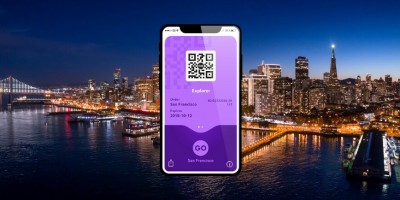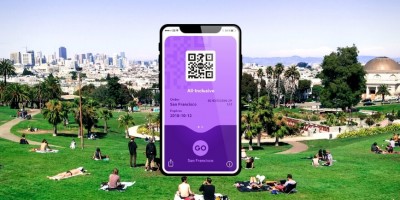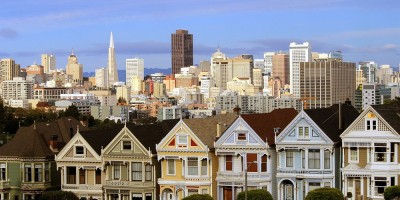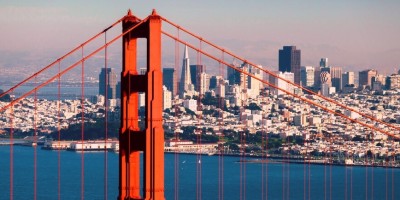Main Menu
-
Itineraries & Vacations
- Itineraries & Vacations
- BY TYPE
- Escorted Group Tours
- Road Trips in The US™
- BY INTEREST
- Route 66
- National Parks
- BY SPECIAL OFFER
- GIFT CARD
- Discount Coupons
- Tours in Major Cities
-
Travel Guides
- Travel Guides MOST VISITED CITY
- New York City Guide
- TOUR GUIDES BY CITY
- Miami - Travel Guide
- Los Angeles - Travel Guide
- San Francisco - Travel Guide
- Las Vegas - Travel Guide
- Chicago - Travel Guide
- Washington DC - Travel Guide
- Boston - Travel Guide
- San Diego - Travel Guide
- Orlando - Travel Guide
- New Orleans - Travel Guide
- TRAVELING IN THE US
- Good to Know
- Lodgings
- Disney Travels™
Explore the iconic Cable Cars of San Francisco
History, Routes, and Fares Categories: San Francisco - Travel Guide - What to see
The Historic Cable Cars of San Francisco
The historic Cable Cars of San Francisco are one of the most iconic attractions in the Californian city. For those unfamiliar with them, these vintage cable-driven streetcars are much more than just a mode of transportation—they are a true symbol of innovation and local culture. Every year, millions of visitors board these cable cars for a unique experience that takes them not only through the city’s famous hills but also on a journey back in time.What makes the Cable Cars so special? It’s not just their undeniable vintage charm and practical use. The streetcars are considered one of the most interesting San Francisco attractions, a true bridge between past and present, captivating visitors of all ages. They were even declared a National Historic Landmark.
The History of San Francisco’s Cable Cars
Before enjoying a ride, it’s worth learning about their history. The origins of San Francisco’s Cable Cars date back to 1870, when their founder, Andrew Smith Hallidie, witnessed a traumatic accident: a horse-drawn carriage lost control on one of the city’s steepest hills, causing severe damage. This event sparked Hallidie’s idea to create a cable-driven system that could safely navigate San Francisco’s steep terrain.The Birth of the First Line
Hallidie inaugurated the first line along Clay Street on August 2, 1873. The cable-driven system was innovative for its time and an immediate success. The mechanism was based on a continuously moving cable operated from a central power station, which the streetcars would attach to for movement. This revolutionary system not only improved passenger safety but also allowed for urban development in previously inaccessible hilly areas.Expansion and Decline
Following the success of the first line, the system grew to include 20 lines by the late 19th century, covering much of the city. Unfortunately, the rise of electric streetcars and buses in the early 20th century led to the decline of the Cable Cars. By the 1940s, the system was at risk of being shut down. Thanks to citizen protests and the efforts of individuals like Friedel Klussman, the tradition was preserved. Today, just three lines remain, but they continue to be one of San Francisco’s top attractions.Fun Facts and Anecdotes
Cable Cars are an integral part of San Francisco’s life and culture. Here are some interesting facts that make them so special:- Manual Operation: Conductors, known as "gripmen," learn to operate the car’s levers through rigorous training, as each ride requires significant strength, precision, and concentration.
- Media Presence: Cable Cars have appeared in numerous films and TV shows, including "Mrs. Doubtfire" and "Bullitt."
- Curious Stories: One of the most bizarre incidents in Cable Car history was the theft of a car’s bell in 1997. The event caused a stir among locals, but the bell was quickly recovered.
The Cable Car Museum
For visitors interested in learning more about the history and mechanics of these historic streetcars, a visit to the Cable Car Museum is a must. Located at 1201 Mason Street, the museum sits directly above the central power station that drives the cables.The museum features a collection of perfectly restored old streetcars, along with historic photographs and vintage uniforms that offer a unique and engaging glimpse into the story of this transportation system.
Visitors can also observe the machinery in action, watching the motors and pulleys that pull the cables beneath San Francisco’s streets.
Interactive experiences allow visitors to understand how gripmen attach and detach the streetcars from the cables through engaging simulations.
Good to know: The museum is completely free. It’s open from 10:00 AM to 4:00 PM, Tuesday to Thursday, and from 10:00 AM to 5:00 PM, Friday to Sunday. It’s closed on Mondays and on holidays like New Year’s Day, Thanksgiving, and Christmas. This is a must-visit stop for history buffs and curious visitors of all ages.
San Francisco Cable Car Lines and Fares
In 2025, the historic Cable Cars operate on three active lines, each offering a different route and connecting various parts of the city:1) Powell – Hyde (60/PH): A scenic route connecting Powell Street and Market Street with Hyde and Beach Streets. This line is popular for its stunning views of San Francisco’s main attractions, including Lombard Street, Alcatraz, and the Golden Gate Bridge.
2) Powell – Mason (59/PM): This line also starts at Powell and Market Streets but ends at Taylor and Bay Streets, passing through Chinatown and the vibrant North Beach neighborhood.
3) California Street (61/C): This line runs along California Street from the historic Financial District to Van Ness Avenue, passing through Nob Hill.
Here are the updated fares:
- Single ride: $8.00 per trip.- Reduced fare (for seniors and people with disabilities): $4.00 per trip.
- Clipper Card: Free for youth under 18 with registration.
- Tourist Passes:
- Day Pass: $13.00
- 3-Day Pass: $31.00
- 7-Day Pass: $41.00
Tickets can be purchased on board or online via the MuniMobile app. To avoid long lines and get the best experience, it’s recommended to ride the Cable Cars early in the morning or late in the afternoon.
Why You Should Ride the Cable Cars
A trip on San Francisco’s Cable Cars is much more than just a ride—it’s a cultural experience that leaves a lasting impression. It’s like traveling back in time and experiencing life as a 19th-century San Franciscan, with sudden jerks and the iconic bell ringing at every stop.A Cable Car tour can easily be combined with visits to San Francisco’s main attractions. For example, Lombard Street, known as the "world’s most crooked street," is visible from the Powell – Hyde line. The Powell – Hyde and Powell – Mason lines also end in the picturesque Fisherman’s Wharf area.
A ride on the Cable Cars is a journey into the heart of San Francisco, blending past and present. It’s an experience enriched by the breathtaking views from the city’s hilly neighborhoods and is a must for any visitor.
We are your
local Tour Agency
in New York City
local Tour Agency
in New York City
Tailored Vacations
Secure Bookings
Your peers love it!
Your vacation, your way!
Free cancellation
BECAUSE IT'S OKAY TO CHANGE PLANS
Planning a vacation shouldn't be stressful. We all know plans might change, that is why we offer free cancellation for most of our services and tours. *
*exclusions may apply, please refer to each tour.
Planning a vacation shouldn't be stressful. We all know plans might change, that is why we offer free cancellation for most of our services and tours. *
*exclusions may apply, please refer to each tour.
What They
Say
Say
Devonnec770 | TripAdvisor
I’m the biggest fan of Fall activities, but haven’t had a chance to do anything beyond Apple Picking in NJ. I decided to take a last minute 2 day trip with a friend in Hudson Valley, but didn’t know where to start [...] Thankfully I was able to use New York Welcome to do the hard work for us [...]
From TripAdvisor - October 2021
Breanna A. | TripAdvisor
Irene was a FANTASTIC tour guide! She was so knowledgeable about the area and was so patient with all our questions. We stopped to use the bathroom and we got coffee halfway through, she was so kind! It was a pleasure learning about Brooklyn from you!
From TripAdvisor - April 2022
Keep in contact
Subscribe to our "New York x USA Welcome" Newsletter to receive Tips & Special Offers to help you plan your travels in the US!
San Francisco Top-Tours
On The Road From/To San Francisco
San Francisco - What to Know
San Francisco Museums
Sightseeing & City Tours in Major Cities
- Brunch Cruise, Champagne & Live Music in San Francisco
- San Francisco Grand City Tour & Escape from the Rock Bay Cruise
- Escorted City Tour and Universal Studios entrance Ticket in LA
- 1 Day tour to Solvang, Hearst Castle and Santa Barbara from LA
- Chicago CityPASS
- Whale Watching Cruise in The Boston Bay
Escorted Group Tours - Traveling in The US with a Group
Private Transfer in Major Cities
Our Destinations in The USA
The US - Good to know
General Information
Office












